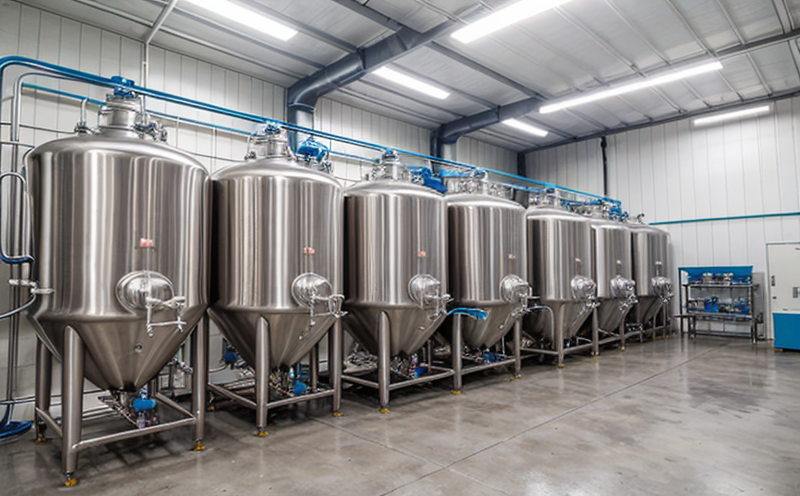EN 17141 Cleanroom Microbiology Monitoring for Biotech Facilities
The European Standard EN 17141 sets forth comprehensive guidelines for the microbiological monitoring of cleanrooms used in biotechnology facilities. This standard is essential to ensure that these controlled environments comply with stringent hygiene and sterility requirements, which are critical for maintaining product quality and ensuring patient safety.
Cleanroom microbiology monitoring involves a series of tests designed to evaluate microbial levels within the facility, identify potential contaminants, and assess the efficacy of cleaning protocols. The process begins with the selection of appropriate sampling sites based on the biotechnology processes being conducted. Samples are then collected using sterile swabs or air sampler devices, depending on the type of contamination being monitored.
Once samples are collected, they are transported to a specialized laboratory for analysis. Here, microbiologists use advanced techniques such as culture-based methods and molecular biology approaches to identify and quantify microorganisms present in the cleanroom environment. Culture-based methods involve inoculating growth media with sampled materials, while molecular techniques like polymerase chain reaction (PCR) allow for rapid detection of specific pathogens.
The acceptance criteria outlined in EN 17141 dictate that microbial counts must not exceed specified limits under defined conditions. For instance, certain types of microorganisms may have zero tolerance levels within cleanroom environments due to their potential risk factors associated with biotechnological processes. Compliance with these standards helps ensure that the facility adheres to good manufacturing practices (GMP) and other regulatory requirements.
Regular monitoring according to EN 17141 is crucial for maintaining a safe working environment in biotech facilities. By continuously evaluating microbial levels, operators can take corrective actions promptly if any deviations from acceptable norms are detected. This proactive approach not only enhances productivity but also protects both the facility’s reputation and the health of employees.
In summary, EN 17141 provides a robust framework for managing cleanroom microbiology in biotech facilities by providing clear instructions on how to conduct thorough microbial assessments effectively. Adhering to this standard ensures that all necessary precautions are taken to prevent contamination incidents and maintain the integrity of products manufactured within these controlled environments.
- Sampling sites based on biotechnology processes
- Use of sterile swabs or air samplers for sample collection
- Culture-based methods and molecular biology approaches for analysis
- Acceptance criteria specifying microbial count limits
Industry Applications
The application of EN 17141 in industrial fermentation and biotechnology microbiology is extensive, covering various sectors including pharmaceuticals, cosmetics, food & beverage, and medical devices. In the pharmaceutical industry, ensuring cleanroom cleanliness is paramount due to strict regulations governing drug production processes.
Incosmetics manufacturing, maintaining a sterile environment during product formulation ensures that final products meet stringent quality standards. Similarly, in the food and beverage sector, controlling microbial contamination helps prevent spoilage and maintains consumer safety.
For medical device manufacturers, compliance with EN 17141 is vital for producing sterile devices free from harmful pathogens. Regular microbiological monitoring according to this standard ensures that all production stages comply with international health standards set forth by organizations such as the World Health Organization (WHO).
- Pharmaceuticals
- Cosmetics
- Food & Beverage
- Medical Devices
Customer Impact and Satisfaction
Implementing EN 17141 in biotech facilities significantly impacts customer satisfaction by ensuring that products meet the highest quality standards. This standard helps prevent recalls caused by microbial contamination, thereby protecting both brand reputation and consumer trust.
By adhering to EN 17141 guidelines, companies can demonstrate their commitment to maintaining a clean and controlled environment throughout product development cycles. This transparency fosters greater confidence among clients who rely on reliable data when making purchasing decisions.
The implementation also leads to improved operational efficiency through early detection of contamination issues. Quick identification allows for timely interventions that minimize downtime, ultimately enhancing overall productivity without compromising safety standards.
Furthermore, compliance with this standard enhances regulatory compliance and reduces the risk of non-conformity penalties imposed by relevant authorities. This not only saves costs associated with potential fines but also promotes a culture of continuous improvement within organizations.
Use Cases and Application Examples
The use cases for EN 17141 in biotech facilities span multiple scenarios, each highlighting the importance of maintaining a controlled environment free from contamination. One common scenario involves initial validation studies conducted during facility commissioning.
In these tests, microbiologists perform extensive cleanroom microbiology monitoring to establish baseline microbial levels before introducing products or personnel into the space. Another frequent application occurs during routine audits where ongoing compliance is verified through regular sampling and analysis.
Additionally, when implementing new processes or technologies within biotech facilities, periodic microbiological assessments ensure that changes do not adversely affect cleanliness standards. This proactive approach ensures long-term reliability of operations while minimizing disruptions caused by unexpected contamination events.





